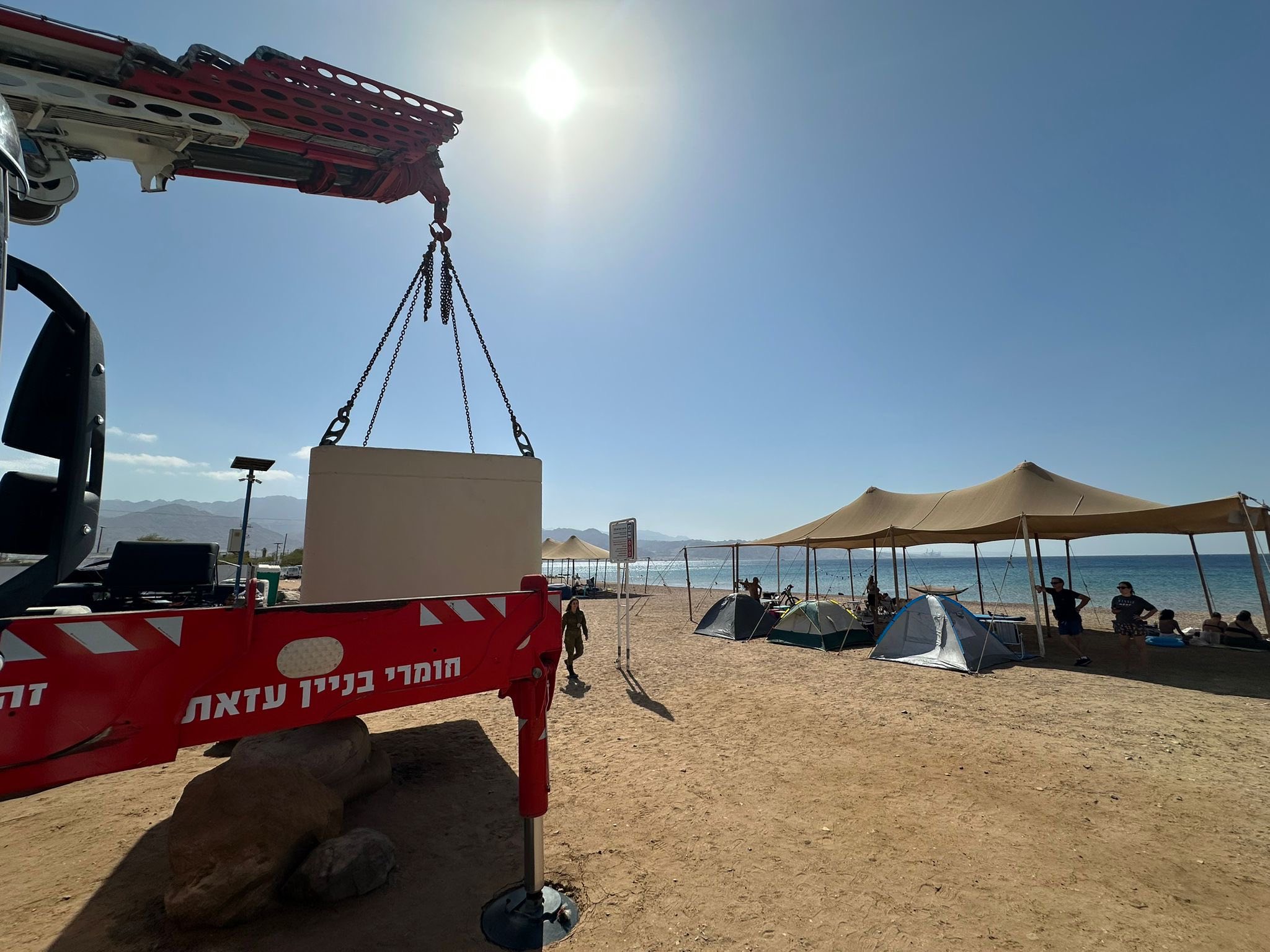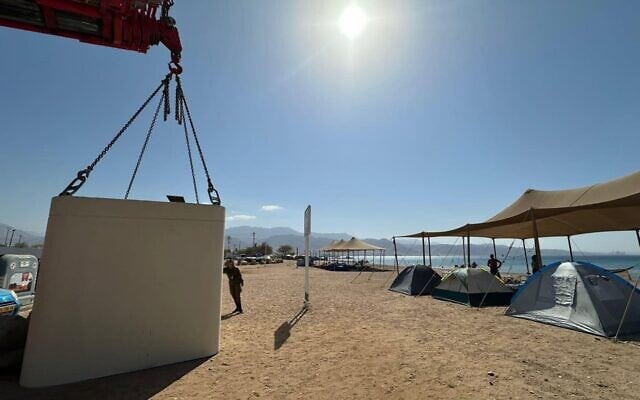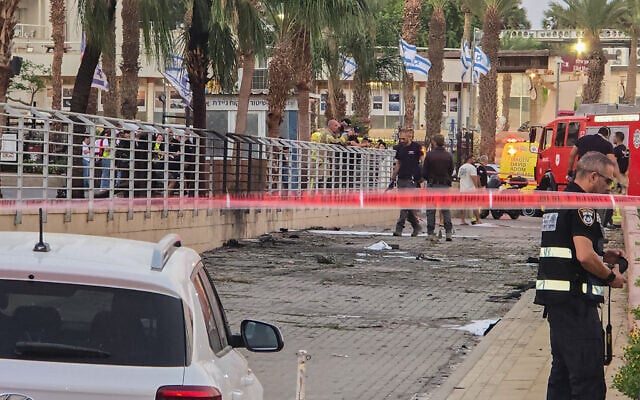


Authorities in Eilat installed bomb shelters on beaches and in other public spaces Sunday, as the Red Sea resort city faces a wave of drone attacks from the Iran-backed Houthi rebels in Yemen. Hours later, another incoming drone was shot down.
The move to install further shelters came a Houthi drone attack last month evaded defense and exploded in the city, wounding 20 people, several of them seriously.
There were no reports of damage or injuries from the drone over Israel’s southernmost city on Sunday. Sirens sounded in the to the drone attack and over fears of falling fragments following the interception.
Footage showed that at least two interceptor missiles were launched to take down the drone.
The attack came after the Iran-backed Houthis launched a ballistic missile at Israel Sunday morning, which was also intercepted after triggering sirens in central Israel, the Dead Sea area and the southern West Bank, sending hundreds of thousands of people into shelters.
Meanwhile, the IDF Home Front Command installed 10 new mobile bomb shelters in open areas in Eilat, “to provide an immediate and safe solution even in open areas,” the municipality said on Facebook.

The shelters were placed at Mayor Eli Lankri’s request in open sports fields and beaches that are not adjacent to Eilat’s promenade, the municipality said.
Shelters were placed along Eilat’s Sun Bay, EAPC (Katza) and Lighthouse beaches, as well as Fedkin Park, the International Sports Complex, and two soccer fields located next to the Rabin High School and Eastern Lagoon, respectively, according to the municipality.
It noted that Home Front Command guidelines give Eilat residents 30 seconds to reach a shelter in case of an alert, regardless of the threat and its origin.
According to an Israeli Air Force investigation, the Houthi drone that wounded 20 people in Eilat last month was detected relatively late, though the Home Front Command still activated sirens to warn civilians of the attack, “according to protocol,” the military said.
Attempts to intercept the drone with two Iron Dome missiles “were unsuccessful,” the IDF said a day after the attack, adding that “the reason for this was identified and corrective measures were implemented.”
Because of the late detection, the IAF did not have enough time to dispatch helicopters or fighter jets to shoot it down.
Following the attack, IAF chief Maj. Gen. Tomer Bar instructed “several additional steps to strengthen readiness, detection and interception capabilities” in the Eilat area, which will “provide an enhanced defensive response,” the military added at the time.
A day after the strike, Home Front Command chief Maj. Gen. Shai Klepper toured Eilat with Lankri and reiterated the IDF’s announcement that the Iron Dome’s failure had been fixed.
The Houthis — whose slogan calls for “Death to America, Death to Israel, [and] a Curse on the Jews” — began attacking Israel and maritime traffic in November 2023, a month after the October 7 Hamas massacre that sparked the war in Gaza.
The Iran-backed rebels held their fire when a ceasefire was reached between Israel and Hamas in January 2025. By that point, they had fired over 40 ballistic missiles and dozens of drones and cruise missiles at Israel, including one that killed a civilian and wounded several others in Tel Aviv in July 2024, prompting Israel’s first strike in Yemen.
Since March 18, when the IDF resumed its offensive against Hamas in the Gaza Strip, the Houthis in Yemen have launched 91 ballistic missiles and at least 41 drones at Israel. Several of the missiles have fallen short. In response, Israel has attacked the Iran-backed Houthis in Yemen, located some 1,800 kilometers (1,100 miles) away, 19 times.



